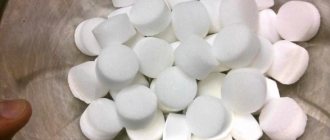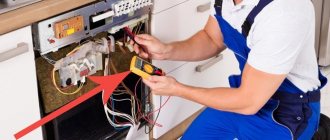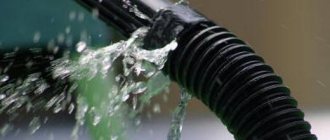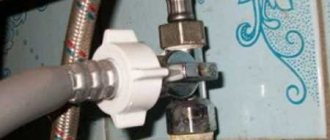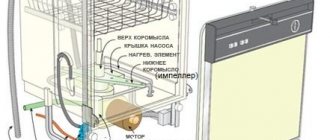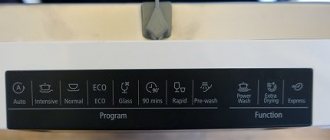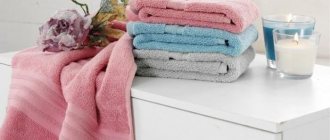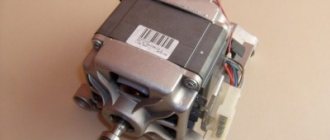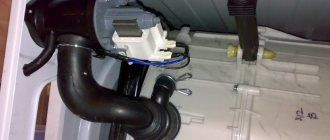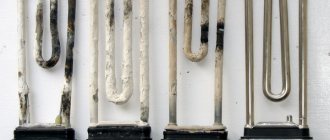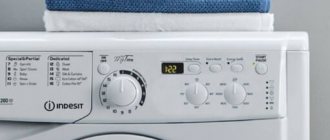Household chemicals with the eco prefix are more expensive than conventional dishwasher gels. Tableted reagents made from pressed powder with the addition of components for various purposes, for example, 3 in 1, are also sold at a high price.
You can reduce the burden on the family budget and reduce the intake of chemicals remaining on clean dishes. To do this, you need to replace store-bought tablets with homemade briquettes from products that are in every kitchen. There are enough recipes, but such a transition, along with advantages, is also accompanied by disadvantages.
- Composition of factory dishwasher tablets
- Ingredients for homemade compositions
- Soda based recipes
- Advantages and disadvantages of artisanal briquettes
- Catalog of dishwashers with reviews
Composition of factory dishwasher tablets
To replicate the properties of a PMM detergent at home, you need to know the components of the original factory sample. After this, replace the chemicals with alternative substances of natural origin.
Tablets for PMM
The composition of dishwasher tablets from all manufacturers is approximately the same.
Chlorine
The most dangerous element of the tablets is chlorine, used to disinfect water and dishes. It can lead to serious illnesses. In the European Union, the use of some chlorine-containing substances is already prohibited.
Sodium citrate
Sodium citrate, designated E331, is needed to form foam and disinfect kitchen utensils. The substance is part of food additives approved in the Russian Federation.
Sodium percarbonate
Persalt or sodium percarbonate is a derivative of hydrogen peroxide and sodium carbonate. The substance has a bleaching effect, so it can often be found in powders for white laundry. The component makes washing dishes easier by breaking down dirt.
Sodium disilicate or “liquid glass”
Another component that softens water and prevents the deposition of salts on the internal parts of PMM is sodium disilicate or so-called liquid glass. In industry, the substance is used for anti-corrosion and antiseptic treatment. In detergents, sodium disilicate acts as a multifunctional substitute for phosphates.
Sodium gluconate
A well-known food additive, sodium gluconate, has a negative effect on the human body when used in excess. The substance is found in household chemical products and is also used in the metallurgical and oil industries. The main purpose of sodium gluconate is to prevent the formation of limescale.
Soda Ash
To soften hard water, you can find soda ash in the list of ingredients in dishwasher tablets.
Sodium bicarbonate
Baking soda or calcium bicarbonate is a powder used to soften water with high salt content.
Isooctyl glucoside
Washed dishes shine clean thanks to a chemical component such as isooctyl glucoside.
Sorbitol
The thickener sorbitol is used in detergents to give the composition uniformity.
Rapeseed oil methyl ester
The resulting surface tension of water is reduced with the help of a component such as rapeseed oil methyl ester.
Glycerol
Glycerin is used to create cosmetics and smoking liquid for electronic cigarettes. In household chemicals it is used as a thickener. Glycerin makes the product viscous and helps maintain this consistency.
Acetic acid
The scale that forms on the parts of the dishwasher over time is washed off thanks to acetic acid. In addition, the substance gives the dishes shine.
Amylase and protease
These components break down carbohydrate and protein compounds, so that even dried food remains are washed off easily.
Subtilisin
An element that helps get rid of fatty contaminants is subtilisin.
Various surfactants and A-surfactants
Surfactants clean dishes well due to the fact that they connect water and fat molecules.
But at the same time they are able to break down human sebum. Therefore, these substances can cause serious harm to health. Anionic surfactants are considered the most dangerous. The effect of these harmful components can be enhanced by phosphates, since they facilitate the penetration of substances into the human blood through the skin. According to Russian sanitary standards, the concentration of surfactants in household chemicals should not exceed 5%.
Expert opinion
Irina. Housewife.
Ask a Question
These substances can have harmful effects on the human body over time. Replacing chemicals with natural products of natural origin is advisable to improve the health of all family members.
Types of detergents
In order for your dishwasher to please you with its proper operation for a long time, you need to purchase only high-quality detergents that have proven themselves due to their effectiveness. In such a situation, when buying a washing product, women do not even look at what chemicals are contained in the composition, because the result is important.
Today the market offers the following types of detergents:
- Powders . This type of dishwashing detergent is very popular because it is easy to use. However, when purchasing just such a substance, many housewives think about where exactly it needs to be poured. During operation, you just need to pour the powder into a special compartment in your dishwasher.
- Gels . Also, when used, they are poured into a special compartment. This product is much safer for the car and is more economical.
- Pills . The tablets are not recommended for use in older cars. When purchasing such cleaning material, the question also arises of where to put it. A distinctive feature of this product is that it is applied directly to the dishes.
- 3 in 1 products . It is both a detergent, a rinse aid, and a water softener.
- Ecological means . Against the backdrop of a general boom in the form of a massive transition to organic household chemicals, environmentally friendly dishwashing products are also becoming popular. They can be produced in various forms, so each housewife can independently choose a method of use that is convenient for herself.
Ingredients for homemade compositions
To restore order in the house, housewives often use powders and liquids available in the kitchen. They are the components of complex compositions for the dishwasher. Each ingredient performs one or more cleaning functions:
- Powder (notional) from laundry or baby soap is a surfactant: the main component of the detergent. First, the soap bars are dried, then crushed on a grater. Small soap remnants are also suitable for preparing the powder.
- Baking soda – acts as a cleaning agent. Keeps dishes white. It won’t cope with grease, but it will remove scale and stains from tea.
- Epsom salts, magnesium or sodium sulfate. The appearance resembles coarse table salt, but has nothing to do with it.
- Citric acid - removes limescale and scale from the surfaces of the dishwasher chamber and its heating element.
- Borax, sodium boric salt – has cleaning and disinfecting properties. Sold in pharmacies and hardware stores.
- Glycerin is a viscous, colorless liquid with a sweetish taste. Antiseptic and good solvent.
- Table vinegar – kills bacteria and microorganisms, used to remove lime salts in household appliances.
- Mustard has long been used to clean grease from baking sheets and frying pans.
To give the dishes a fresh smell, you can add a few drops of essential oil to the prepared composition. Additions of citrus aromas also help dissolve fat. It is recommended to add table salt to any mixture - it is used as a hard water softener.
Have you set the water hardness in PMM?
Yes, of course. No.
What should you consider when preparing homemade products?
- Size. When making dry capsules, take into account the dimensions of the tablet compartment in the PMM - a large product simply will not fit in it.
- Safety. When preparing detergents, wear a mask and gloves to prevent particles of powdered ingredients from getting into your eyes and lungs.
- Concentration. Don't overdo it with baking soda: if it doesn't dissolve, it will leave a white residue on the appliances.
Advantages and disadvantages of artisanal briquettes
The main advantages of homemade washing tablets and dish powders are composition and cost. The effect of homemade and factory-made reagents is assessed according to several criteria. There are four such indicators:
- Washing quality. Homemade tablets are no match for low-grade factory-made tablets. Moreover, to high-quality capsules, the components of which contain a minimum of harmful substances, but are guaranteed to clean the dishes cleanly.
- The effectiveness of the ingredients of the product. The compositions of the factory tablets are selected so that the reagents are dissolved in water one by one, in accordance with the phase of the program cycle: first the washing component, then the rinse aid. Home technology does not allow the action of the ingredients to be separated in time: they all decompose at the same time.
- Possibility of composition manipulation. Changing the components and dosages when making homemade products at your own discretion is not always good. Excess soda impairs the dissolution of briquettes, and citric acid in large quantities can damage the plastic parts of the dishwasher. Industrial gels and tablets are manufactured according to technical specifications agreed with PMM manufacturers.
- Resource consumption. Homemade products are washed off quickly and easily from dishes. To remove chemical particles from plate surfaces, rinsing takes a long time, which leads to increased water and energy consumption. Here the advantage is on the side of tablets made at home.
What are the dangers of household chemicals?
Today's household chemicals perfectly break down fats and make water softer - all thanks to surfactants. The debate about their effect on the human body does not stop. One thing is clear: there is harm from them and everyone decides for themselves how to deal with it. You can rinse the dishes more thoroughly, or you can completely refuse to use store-bought products.
If you use household chemicals, read their composition. The most dangerous ingredients that may be contained in detergents are:
- chlorine and organochlorine compounds;
- formaldehyde;
- Surfactant
Harmful components cause anemia, allergies, pulmonary tuberculosis, worsen the condition of the skin and hair, provoke atherosclerosis and cancer, and reduce immunity.
Popular recipes
There are several options that will help you, without leaving your home, acquire a product used for washing dishes in the dishwasher. Let's consider popular methods that are not very complex.
First
Perhaps it couldn’t be simpler, and this recipe is suitable even for the lazy. To create tablets you will need a little:
- Washing powder, preference is given to those intended for children's laundry - it contains fewer aggressive components that can cause harm to health.
- Water, use regular tap water. You can add a few drops of hydrogen peroxide to it. It will act as a bleach.
- Soda, take regular baking soda, it will help soften the water.
Mix the powder and soda in a ratio of 7 to 3, dilute everything with water. When the mushy mixture reaches the desired consistency, pour it into molds and let dry. Then place it in a glass container and cover tightly with a lid. That's it, the tablets are ready.
Second
This method involves the use of glycerin, the procedure is similar to the previous recipe. The following ingredients will be required:
- 5 milliliters of glycerin.
- 150 grams of washing powder.
- 40 grams of soda.
See also
TOP 5 ways to remove rhinestones from clothes at home without leaving a trace
Mix soda and powder, add glycerin, put everything into molds, dry, then use for its intended purpose.
Attention! If you couldn't find glycerin, don't worry, take dishwashing liquid and use it.
Third
The recipe is suitable for those who are not looking for easy ways and want to experiment a little. The compressed capsules contain the following components:
- 100 grams of borax.
- 75 grams of soda.
- Magnesia or Epsom salt – 250 grams.
- 20 grams of citric acid.
Everything except citric acid should be poured into a container and mixed. When the mixture becomes homogeneous, take citric acid and dilute it with water. Then we add it to the other ingredients. When the reaction subsides, place in molds and dry in a warm and dry place.
Advice: if you work with chemicals, do not forget about protection, wear gloves and a gauze bandage.
Fourth
It is not very complicated; the recipe involves the use of the following components:
- baby laundry detergent;
- soda;
- mustard powder;
- glycerin or dish gel.
Mix all components in equal proportions, add glycerin to the mixture, and maybe a little water. When the solution reaches the desired consistency, place it in containers and dry the tablets in a suitable place.
Fifth
If you are confused by the presence of powder in homemade products, then I offer an alternative recipe:
- You will need concentrated lemon juice or citric acid.
- Borax and soda.
All components are mixed in equal proportions - 1 to 1. If the water is highly hard, then increase the amount of soda by 2 times. You must proceed according to the following scheme:
- It’s worth mixing borax and soda;
- add lemon juice to the mixture; if you use acid, you will also have to add water.
Then the finished product is laid out in forms. In a few days it can be used for its intended purpose, for washing dishes.
